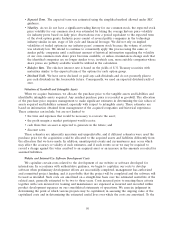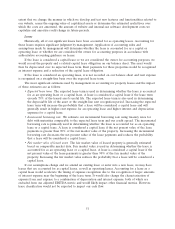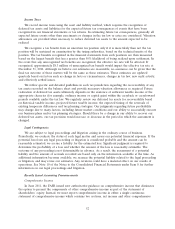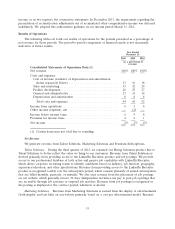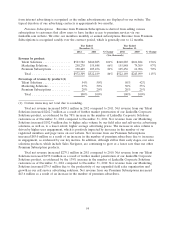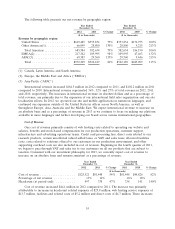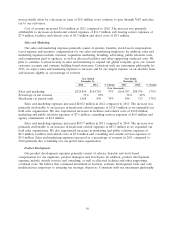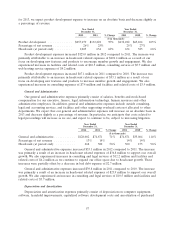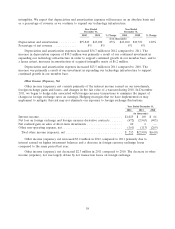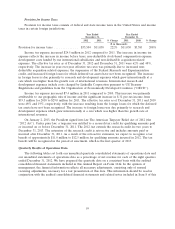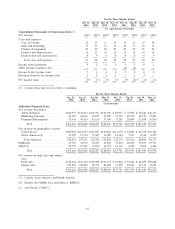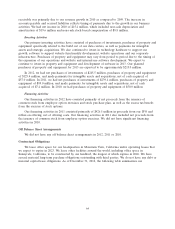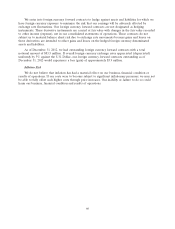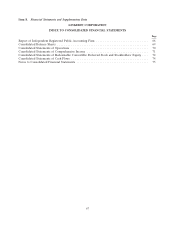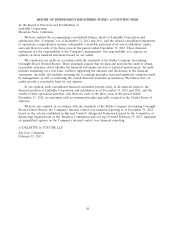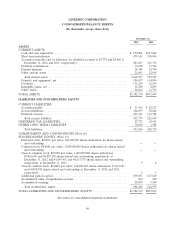LinkedIn 2012 Annual Report Download - page 61
Download and view the complete annual report
Please find page 61 of the 2012 LinkedIn annual report below. You can navigate through the pages in the report by either clicking on the pages listed below, or by using the keyword search tool below to find specific information within the annual report.
Provision for Income Taxes
Provision for income taxes consists of federal and state income taxes in the United States and income
taxes in certain foreign jurisdictions.
Year Ended Year Ended
December 31, December 31,
2012 2011 % Change 2011 2010 % Change
($ in thousands)
Provision for income taxes .............. $35,504 $11,030 222% $11,030 $3,581 208%
Income tax expense increased $24.5 million in 2012 compared to 2011. The increase in income tax
expense reflects the increase in income before taxes, non-deductible stock-based compensation expense,
development costs funded by our international subsidiaries and non-deductible acquisition-related
expenses. The effective tax rates as of December 31, 2012 and December 31, 2011 were 62% and 48%,
respectively. The increase in year-over-year effective tax rates was primarily due to increased non-
deductible acquisition related expenses, the suspension of the Federal Research and Experimentation
credit, and increased foreign losses for which deferred tax assets have not been recognized. The increase
in foreign losses is due primarily to research and development expenses which grew internationally at a
rate which was higher than the growth rate of international revenues. International research and
development expenses include costs charged by LinkedIn Corporation pursuant to US Treasury
Regulations and guidelines from the Organization of Economically Developed Countries (‘‘OECD’’).
Income tax expense increased $7.4 million in 2011 compared to 2010. This increase was primarily
attributable to our geographic mix of income and the significant increase in U.S. pre-tax income from
$19.3 million for 2010 to $29.0 million for 2011. The effective tax rates as of December 31, 2011 and 2010
were 48% and 19%, respectively, with the increase resulting from the foreign losses for which the deferred
tax assets have not been recognized. The increase to foreign losses was due primarily to research and
development expenses which grew internationally at a rate which was higher than the growth rate of
international revenues.
On January 2, 2013, the President signed into law The American Taxpayer Relief Act of 2012 (the
‘‘2012 Act’’). Under prior law, a taxpayer was entitled to a research tax credit for qualifying amounts paid
or incurred on or before December 31, 2011. The 2012 Act extends the research credit for two years to
December 31, 2013. The extension of the research credit is retroactive and includes amounts paid or
incurred after December 31, 2011. As a result of the retroactive extension, we expect to recognize a tax
benefit of approximately $11.0 million to $12.5 million for qualifying amounts incurred in 2012. The tax
benefit will be recognized in the period of enactment, which is the first quarter of 2013.
Quarterly Results of Operations Data
The following tables set forth our unaudited quarterly consolidated statements of operations data and
our unaudited statements of operations data as a percentage of net revenue for each of the eight quarters
ended December 31, 2012. We have prepared the quarterly data on a consistent basis with the audited
consolidated financial statements included in this Annual Report on Form 10-K. In the opinion of
management, the financial information reflects all necessary adjustments, consisting only of normal
recurring adjustments, necessary for a fair presentation of this data. This information should be read in
conjunction with the audited consolidated financial statements and related notes included in Item 8 of this
59



